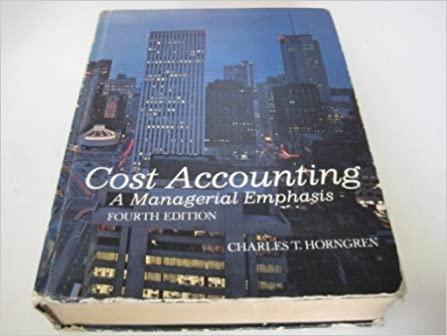Spending and Efficiency Variances Refer to Problem 8-14. Suppose that it actually took 19,000 hours of input
Question:
Spending and Efficiency Variances Refer to Problem 8-14. Suppose that it actually took 19,000 hours of input to obtain the 17,600 units of output achieved. The standard direct-labor allowance is one hour per unit of product manufactured.
. Prepare a performance report showing five columns:
(a) actual inputs at actual prices,
(b) spending variance,
(c) flexible budget based on actual hours of input times budgeted or standard unit prices,
(d) efficiency variance, and
(e) flexible budget based on standard hours allowed for the actual output achieved.
. Sketch a graph of how the total overhead behaves. Indicate where the total spending variance and the total efficiency variance would appear on the graph.
. Suppose that a new worker wasted an extra $300 of supplies during the month, so that the actual cost of supplies was $1,300. The unit cost of supplies was unaffected. Would the $300 appear as an additional efficiency variance or as an additional spending variance? Explain fully.
Step by Step Answer:





